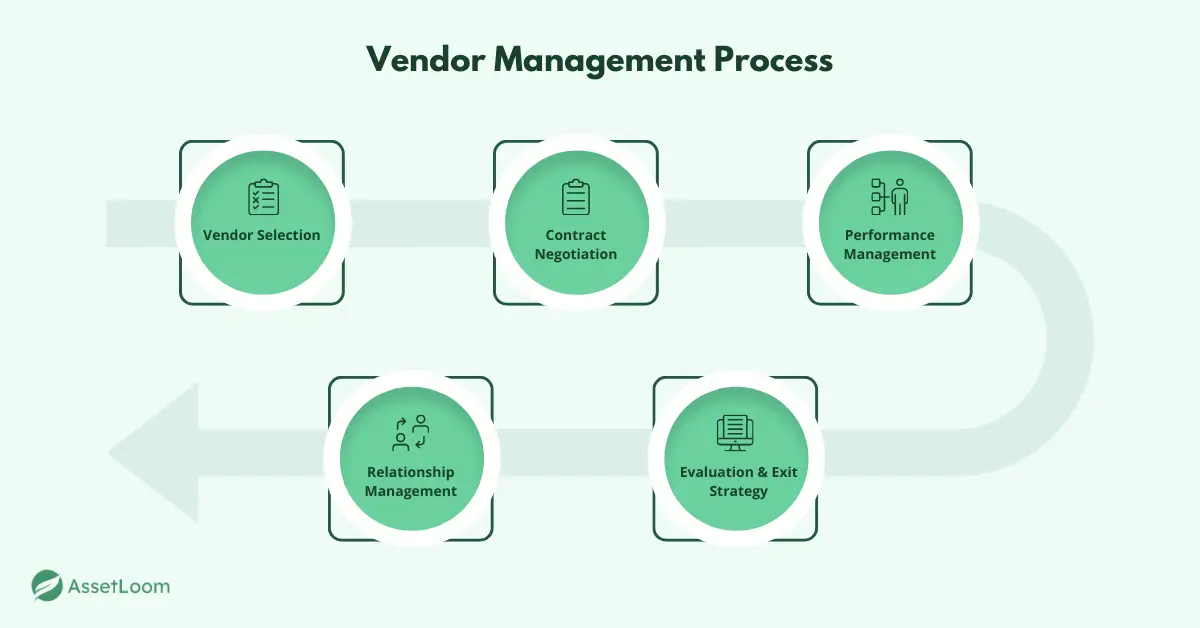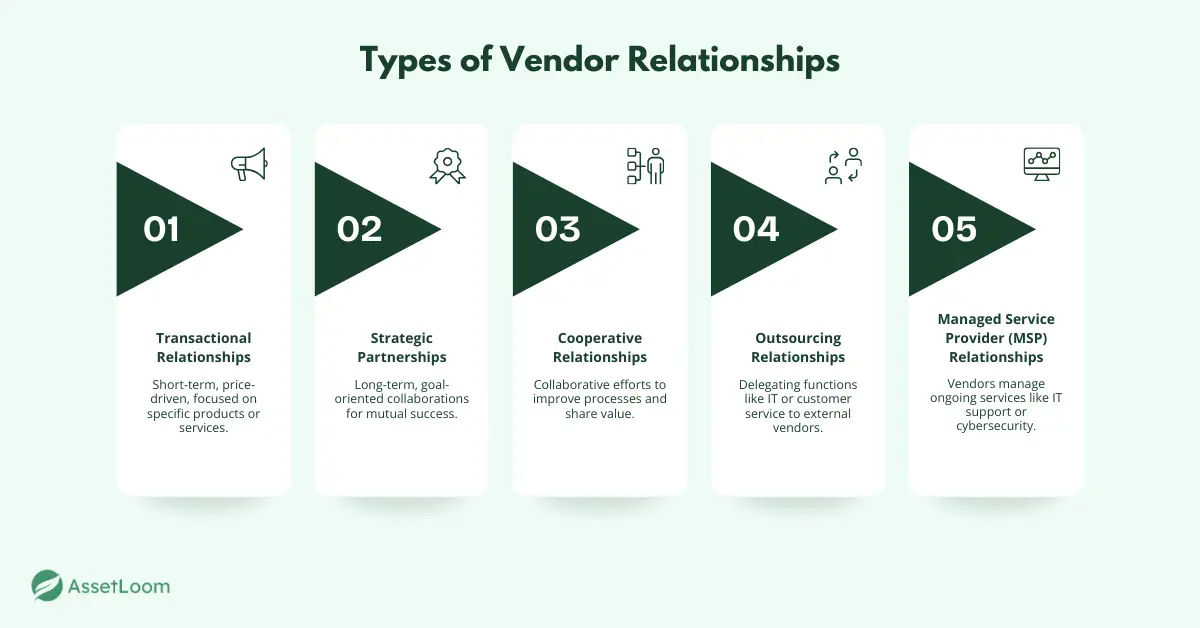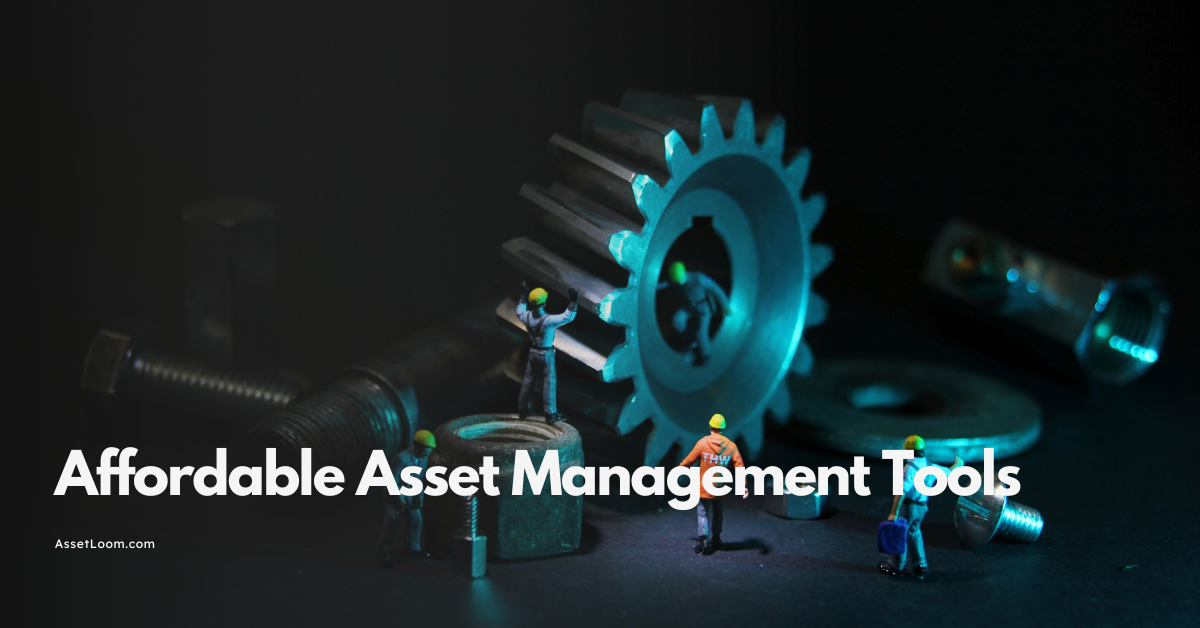What is Vendor Management?
Learn about vendor management, its stages, benefits, and how it improves business operations and supplier relationships.
Managing vendor relationships can be tricky. Balancing quality, cost, and communication often feels like a tightrope walk. When things go wrong, businesses face issues like missed deadlines, rising costs, and unmet expectations. Without a solid strategy, these problems can quickly add up and hurt your bottom line.
Effective vendor management can help you avoid these pitfalls. By setting clear processes and building strong relationships, you can create smoother, more efficient partnerships. In this blog, we'll explore the key stages of vendor management, the roles that drive success, and best practices to help you overcome common challenges.
What is Vendor Management?
Vendor management is the process of overseeing and optimizing relationships with external suppliers, from selecting vendors and negotiating contracts to monitoring performance and ensuring compliance.
While the main focus is on building strong supplier relationships, vendor management also involves collaboration with internal teams like legal, finance, and procurement to align with business goals and reduce risks.
For tech-dependent companies, IT asset management (ITAM) plays a key role in managing digital assets provided by vendors. Integrating ITAM with vendor management ensures better control and reduces risks related to outdated or non-compliant assets.
Effective vendor management helps streamline operations, cut costs, and improve service quality, all while minimizing potential disruptions.
The Stages of Vendor Management
Vendor management isn’t a one-time task; it’s an ongoing process that unfolds in several key stages. Each stage plays a vital role in building strong, productive relationships with your vendors, ensuring both sides are aligned and working towards common goals. Here’s a breakdown of the essential stages of vendor management:
1. Vendor Selection
The first step is finding the right vendor. This means understanding your business needs and selecting vendors who can meet them in terms of quality, cost, and reliability. It’s about more than just price. It’s about finding a partner that fits well with your business goals and values.
2. Contract Negotiation and Agreement
Once you’ve selected a vendor, the next step is negotiating a clear and fair contract. This includes setting expectations, defining the scope of work, agreeing on pricing, and outlining key performance indicators (KPIs) to measure success. A solid contract sets the foundation for a successful partnership and helps avoid misunderstandings later on.
3. Vendor Performance Management
This stage is about keeping an eye on how well your vendor is delivering. Regular performance reviews, based on the KPIs outlined in the contract, help you track whether your vendor is meeting agreed-upon expectations. If any issues arise, it’s important to address them early to avoid bigger problems down the line.
4. Ongoing Relationship Management
Vendor management is not just about contracts and performance; it’s about nurturing the relationship over time. Regular communication, feedback, and collaboration help ensure both parties continue to meet their goals. A strong, positive relationship can lead to better service, priority support, and even opportunities for innovation together.
5. Vendor Evaluation and Exit Strategy
Finally, it’s important to periodically evaluate the vendor relationship. If a vendor isn’t meeting expectations or no longer aligns with your business needs, it may be time to consider alternatives. Having a clear exit strategy in place ensures a smooth transition, minimizing disruption to your operations.

Key Roles in the Vendor Management Process
To manage vendor relationships effectively, it’s important to have the right people in place. These key roles help ensure that everything runs smoothly, from contracts to performance and finances. Let’s take a look at the main roles involved in the vendor management process:
Contract Manager
The contract manager is responsible for handling all vendor contracts. They make sure that everything is documented properly, from negotiations to contract milestones, and they address any issues that come up along the way. This role ensures the business stays protected legally and financially.
Vendor Manager
The vendor manager is the primary point of contact between the business and its vendors. They keep things running day-to-day, ensuring that vendors meet expectations in terms of quality, delivery, and service. Vendor managers may work with multiple vendors or focus on a specific one, depending on the company’s needs.
Under the vendor manager, other roles play a supporting role in managing vendor relationships:
Financial Analyst
The financial analyst keeps an eye on the financial side of things. They track vendor costs, manage budgets, and make sure that payments are correct and on time. This role ensures that the company’s financial agreements with vendors are met and that everything stays within budget.
Performance Analyst
The performance analyst monitors how well vendors are doing. They track key metrics, like delivery times and quality standards, to make sure vendors are meeting their promises. If things aren’t going as planned, they help identify issues and work with vendors to fix them.
Administrative Support
Administrative support handles the day-to-day logistics of vendor management. They schedule meetings, track deliverables, and keep everything organized. Their role ensures that nothing falls through the cracks and that the vendor management process stays on track.
Types of Vendor Relationships
Vendor relationships come in different forms, each with its own set of expectations and benefits. Here are the key types:
-
Transactional Relationships: Short-term, price-driven, and focused on specific products or services. These relationships are straightforward and low-maintenance.
-
Strategic Partnerships: Long-term, goal-oriented collaborations where both parties work together to drive mutual success.
-
Cooperative Relationships: Collaborative but not as deep as strategic partnerships. The goal is to improve processes and share value.
-
Outsourcing Relationships: A business delegates entire functions to external vendors, such as IT or customer service.
-
Managed Service Provider (MSP) Relationships: Long-term engagements where vendors manage specific services like hardware asset management or cybersecurity.

Benefits of Effective Vendor Management
Effective vendor management offers a range of benefits that can significantly improve your business operations. Here are the key advantages:
-
Cost Efficiency: By negotiating better deals and managing relationships effectively, you can reduce costs, avoid unnecessary expenses, and ensure you're getting the best value for your money.
-
Risk Reduction: Effective vendor management helps identify potential risks early - whether related to supply chain issues, compliance, or security - allowing businesses to take preventive actions before problems arise.
-
Improved Quality: With regular performance monitoring and feedback, businesses can ensure that vendors consistently meet agreed quality standards, leading to better products and services for customers.
-
Stronger Relationships: Building long-term, positive relationships with vendors fosters trust and collaboration, which often leads to priority support, quicker responses, and greater flexibility when you need it most.
-
Faster Time-to-Market: Streamlined processes and better collaboration with vendors help speed up production and delivery, ensuring that products or services reach the market more quickly and efficiently.
Best Practices for Vendor Management
To make the most of your vendor relationships, it’s important to follow a set of best practices that ensure smooth operations and long-term success. These practices help you maintain strong partnerships, optimize performance, and avoid common pitfalls.
Clear Contracts and SLAs
Make sure to establish clear expectations from the start with well-defined contracts and Service Level Agreements (SLAs). These documents outline the terms, deliverables, and timelines, ensuring that both parties understand their roles and responsibilities.
Tip: Having clear terms upfront minimizes confusion, reduces risks, and ensures both parties are aligned.
Regular Communication
Maintain open and consistent communication with your vendors. Regular check-ins help build trust, resolve issues quickly, and ensure both sides are on the same page throughout the partnership.
Tip: Schedule frequent touchpoints to foster a strong relationship and stay ahead of any potential issues.
Leverage Technology
Take advantage of vendor management tools and software to streamline processes and improve organization. These technologies help track performance, manage contracts, and keep all vendor data in one place for easy access.
Tip: Technology can automate tracking and assessments, making it easier to manage multiple vendors and monitor performance efficiently.
Monitor Performance
Consistently track vendor performance against the metrics and KPIs you’ve set. Regular performance evaluations help identify any issues early on and provide an opportunity for continuous improvement.
Tip: Monitoring performance on a regular basis enables you to address problems proactively, ensuring vendors meet your expectations over time.
Foster Collaboration
Build a strong partnership with your vendors by encouraging collaboration and transparency. A vendor who feels valued is more likely to go above and beyond to meet your needs.
Tip: A collaborative approach not only strengthens the vendor relationship but also drives innovation and helps both parties achieve shared goals.
Conclusion
Effective vendor management is crucial for building strong, successful relationships with your suppliers. By following the right processes, understanding key roles, and applying best practices, businesses can reduce risks, improve efficiency, and get the most value from their vendors.
Whether you’re managing just one vendor or several, a solid vendor management strategy will help you stay ahead and ensure your operations run smoothly.

Related Blogs
Subscribe for Expert Tips and Updates
Receive the latest news from AssetLoom, right in your inbox.

